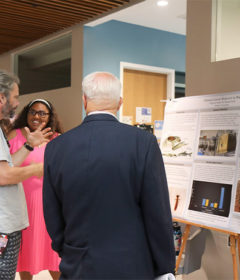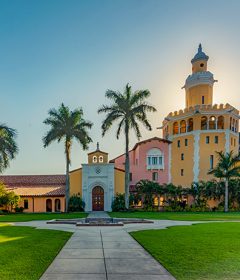‘Oscar Bluemner: A Birthday Potpourri’ Celebrates 150 Years
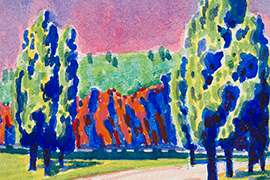
At first glance, the 39 pieces in “Oscar Bluemner: A Birthday Potpourri: Small Works from the Vera Bluemner Kouba Collection” seem to offer just the sort of exquisite visual experience that viewers have come to expect in a display drawn from the Homer and Dolly Hand Art Center’s keynote collection.
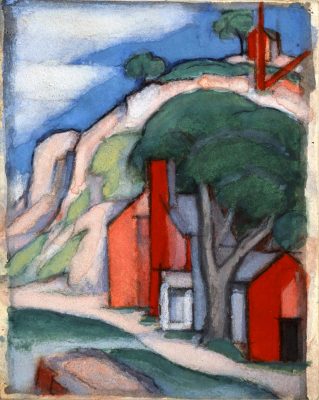
Rich reds and oranges sing in watercolors like Bluemner’s luminous 1924 “Sheds at Quincy, Massachusetts, Quarry,” and the luscious 1917 “Yantika Park, Nutley, N.J.” Blacks are velvety and deep in “Riegelsville, N.J.,” a 1914 landscape that makes more than a nod to vanguard German Expressionism. And the dingy whites in a charcoal sketch from that same year, “Snow Scene,” powerfully evoke winter’s chill in an urban wasteland.
But there is much more than masterworks, however small and in progress, in the art center’s birthday exhibit for Bluemner, who was born in Germany on June 21, 1867. There are birthday surprises and also a subtle sense of his place in history, and his remarkable contacts with many of its greatest personalities and events, styles and circumstances. Few of the exhibit’s small works have ever been shown before, said Tonya Curran, director of the art center.
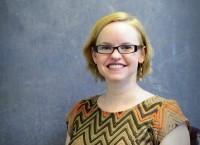
“That makes his birthday a great time to celebrate Bluemner’s work and to look at some examples that are very different thematically from what has been shown before. These are special pieces, unique in their own ways,” Curran said. “We’ll have a birthday cake for him, and for them – like the works in the show, the cake will be a surprise.”
That will make this birthday different from all of Bluemner’s others. After studying painting and architecture in Berlin, Bluemner immigrated to the United States and, serendipitously, found himself in just the right place at just the right time: Chicago in the early 1890s. There he worked as an architectural draftsman at the World’s Columbian Exposition – the famed “White City” – and other projects in both Chicago and New York. By the time he left Chicago, to settle in New York, Modernist architecture had been established by Daniel H. Burnham, Louis Sullivan and other of the great Midwestern architects.
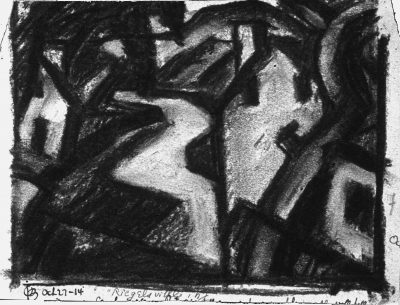
The serendipity that marked Bluemner’s life continued, though sometimes because of necessity. In the early 1900s, New York was awakening to the new, vibrant European styles that would leave their imprint on his art. Yet his precise, detailed draftsman’s hand was still felt as he drew and painted in those early years, influenced by what he saw in the city’s galleries and museums – and, more crucially, through his friendship with Alfred Stieglitz, the American Modernist impresario he met in 1908.
It was in the gallery pioneered by Stieglitz and his circle, 291, that Bluemner saw firsthand the latest in avant-garde – both photography and European painting and sculpture. It wasn’t enough for Bluemner; devoting himself full time from architecture to art, he went back to Europe in 1912 for a seven-month tour that took him through the cultural centers of France, Italy, the Netherlands, Germany and England. He experienced personally not only the Old Masters but also the Modernist movements in each, from Cubism to Expressionism to Futurism.
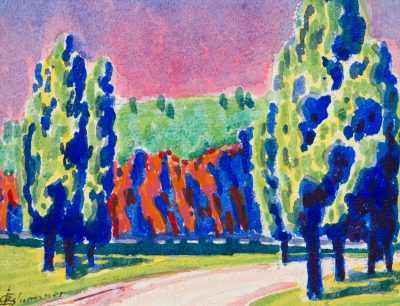
The impact of the European trip on Bluemner’s work was clear on his return to New York. His work was included in the groundbreaking Armory Show of 1913, in a solo show at Stieglitz’s 291 in 1915 and, in 1916, in the Anderson Gallery’s Forum Exhibition. Bluemner’s principles were firm, however, and even as he focused intensely on his art, he chose to promote his own work rather than to become part of the gallery system. That meant working for the Federal Arts Project during the Great Depression and moving often after settling in New Jersey. After his wife’s death in 1926, Bluemner moved to South Braintree, Mass.
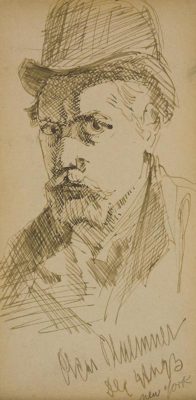
He continued to sketch, to paint and to write about his art theories – and, occasionally, to exhibit. His 1935 solo show at New York’s Marie Harriman Gallery was a success, and its New York Times review could easily have been meant for those in the art center’s elegant birthday tribute. “These startling pictures build harmonies and rhythms,” critic Edward Alden Jewell wrote. “Bluemner relies for his effect upon plain, resonant chords. Though modulations of tone occur, these seem of secondary importance in his scheme. There is decidedly something in this new, bold, exclamatory style.”
Happy 150th Birthday, Dear Oscar!
-Laura Stewart
If You Go:
“Oscar Bluemner: A Birthday Potpourri: Small Works from the Vera Bluemner Kouba Collection” will be at the Homer and Dolly Hand Art Center, 139 E. Michigan Ave., from June 3-July 29.
The Oscar Bluemner Birthday Celebration is set for 4-6 p.m. on June 21.
Oscar Bluemner and “The Great American Painting” lecture by Roberta Favis, Professor Emerita and Curator of the Vera Bluemner Kouba Collection, is set for July 8 from 1 p.m. – 2 p.m. The galleries will be open until 4 p.m. after the lecture.
Admission is free to the art center and hours are 11 a.m.-4 p.m. Monday-Wednesday and Friday; 11 a.m.-6 p.m. Thursday; and noon-4 p.m. Saturday. For more info, call 386-822-7270.

